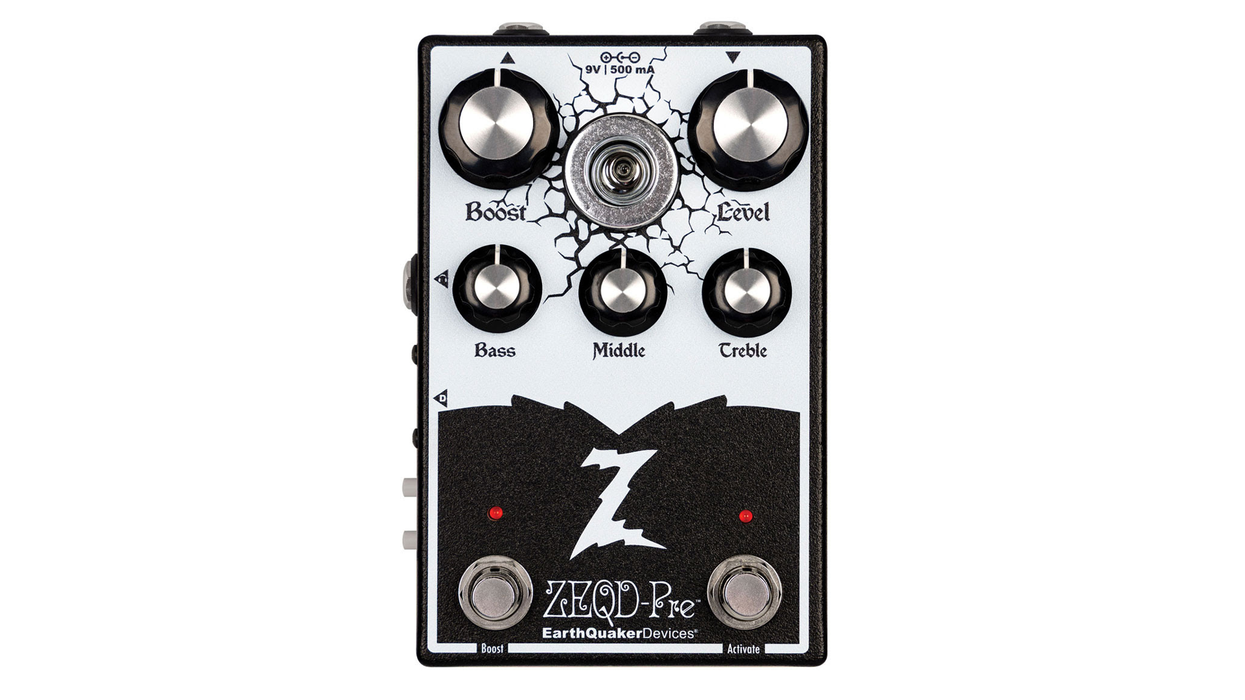Chops: Intermediate
Theory: Advanced
Lesson Overview:
• Develop a better understanding of how to resolve your improvised lines.
• Create melodic phrases by combining blues clichés with more modern sounds.
• Learn how to apply the Super Locrian scale to a blues progression.
Click here to download a printable PDF of this lesson's notation.
One of the quickest ways to take your blues playing to the next level is to incorporate some of the harmonic sophistication you might find in jazz-based lines. This isn’t all-out jazz by any stretch of the imagination, but at the same time, there’s a little more to it than straight-ahead blues.
We’ve talked about scales a lot over the last few years, and we’ve looked at chord progressions in great detail—now it’s time to put those two things together.
Essentially, music (and especially jazz) is about tension and resolution, yet often people only focus on the tension part—playing outside for the sake of playing outside. It’s really important to understand that we only create tension to resolve it.
The first place you’ll learn to do this is over a V chord that resolves to the I. Any dominant 7 chord that moves up a fourth (or down a fifth) will have that feeling of tension and resolution. Not every V chord resolves. For example, when the V chord moves to the IV chord you don’t get that satisfying sound of a resolution. On the other hand when the I chord moves to the IV it’s moving up a fourth—it’s resolving. I know that sounds confusing, but if we look in terms of chord names, it makes sense. In a blues in G, the I chord is a G7 and the IV chord is a C7. Now imagine if we were in the key of C—V (G) to I (C). This shows that there’s a feeling of heightened tension in the fourth measure of a 12-bar blues, so if you choose to exploit that tension, you’re going to get jazzy.
In this lesson, we’ll examine 10 different ways to navigate the first eight measures of a standard Bb blues. If you’ve been paying attention to these columns, you won’t be surprised to see I’m going to use Bb Mixolydian and the Bb blues scales over Bb7 (the I), and Eb Mixolydian over Eb7 (the IV). Remember: The key is resolution, so pay careful attention to how these licks resolve to Eb7.
Our first example (Ex. 1) features a simple Bb7 arpeggio starting with a half-step approach to the 3 (D) on the way up to a b7 (Ab). The b9 (Cb) in measure four is the first alteration above the root and offers a simple way to create an altered sound over the chord.
Click here for Ex. 1
In Ex. 2, we add in some Super Locrian flavors, but in truth I’m focusing on adding alterations to a Bb7 chord. Here, we are using both the b9 and #9. As with Ex. 1, we’re resolving to the 3 of Eb (G) where we have a cool dominant pentatonic idea.
Click here for Ex. 2
Ex. 3 deals with superimposition, which is the art of playing over chords that aren’t there. In this case, I’m imagining an Fm7–E7–Eb7 (hello, tritone substitution!) leading into the IV chord. As we move to the IV chord we highlight several altered tones, including the b5 and b9, before resolving to the 5 of Eb (Bb).
Click here for Ex. 3
We pick up the pace in Ex. 4 with a 16th-note run based on arpeggios from the Bb half-whole diminished scale (Bb–B–C#–D–E–F–G–Ab). The double-time phrase starts by approaching a Bb triad from the b3 before shifting into a G triad and a partial Bbdim7 arpeggio. Finally, it chromatically resolves to Eb before moving up the neck melodically with a classic B.B. King lick. Old meets new!
Click here for Ex. 4
I took inspiration from Scott Henderson for Ex. 5. Here, we use the Super Locrian scale to lead into the 5 of Eb7. It’s rhythmically interesting, melodically unpredictable, and resolves smoothly before going back to the Bb with some sixths and a triad.
Click here for Ex. 5
The inspiration for Ex. 6 comes from players like Oz Noy and uses notes of the Bb whole tone scale (Bb–C–D–E–F#–G#) to provide an augmented edge. This scale has such a calculated quality to it that some find it hard to use, but there’s no denying the tension it creates. Again, we’re resolving this to the 5 before a slippery little pentatonic phrase similar to something Jimmy Herring might play.
Click here for Ex. 6
We combine a pair of eighth-note phrases in Ex. 7. The first one is based out of Mixolydian with some chromatic passing tones, and the second is based around a dominant 7b9 arpeggio. It has a country-meets-Gypsy vibe.
Click here for Ex. 7
Ex. 8 revisits the sound of the Super Locrian scale, but adds the 13 to help with the line’s flow. You could see this as another blend of old and new, as the first half is so classic blues, while we’re using classic bebop licks over the Eb7 chord.
Click here for Ex. 8
Ex. 9 doesn’t really fit into a scale, it’s closer to pentatonic with the added 3 and b9th—this is definitely the sort of thing Jimmy Herring would play though, especially with this articulation. I find that when you take something like Super Locrian and pick two notes on each string you can get some really refreshing ideas.
Click here for Ex. 9
Finally, in Ex. 10 we’re using the Bb tritone scale, something Gary Campbell writes about in his book Expansions. The name is a little deceptive though, as it’s more of an arpeggio approach since it combines a pair of major triads that are a tritone apart (in this case, Bb and E). These notes are also contained in the diminished scale, so it’s all a case of perspective and how you choose to see it.
Click here for Ex. 10
Hopefully these licks have given you something to practice and haven’t left you too confused. Remember, it’s all about resolution, so once you hear those the rest will come together. Listen closely to some of your favorite jazz-blues solos, and hopefully your ears will tune into the concept more clearly now!


















